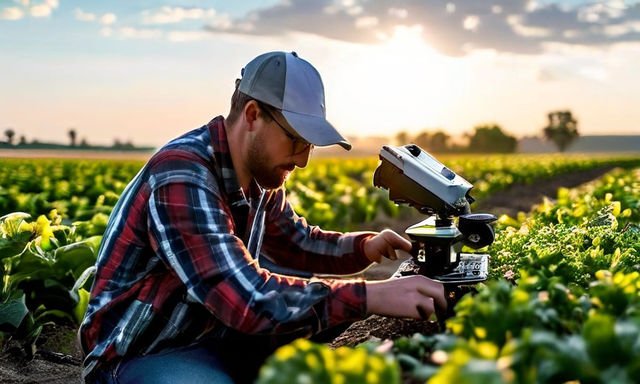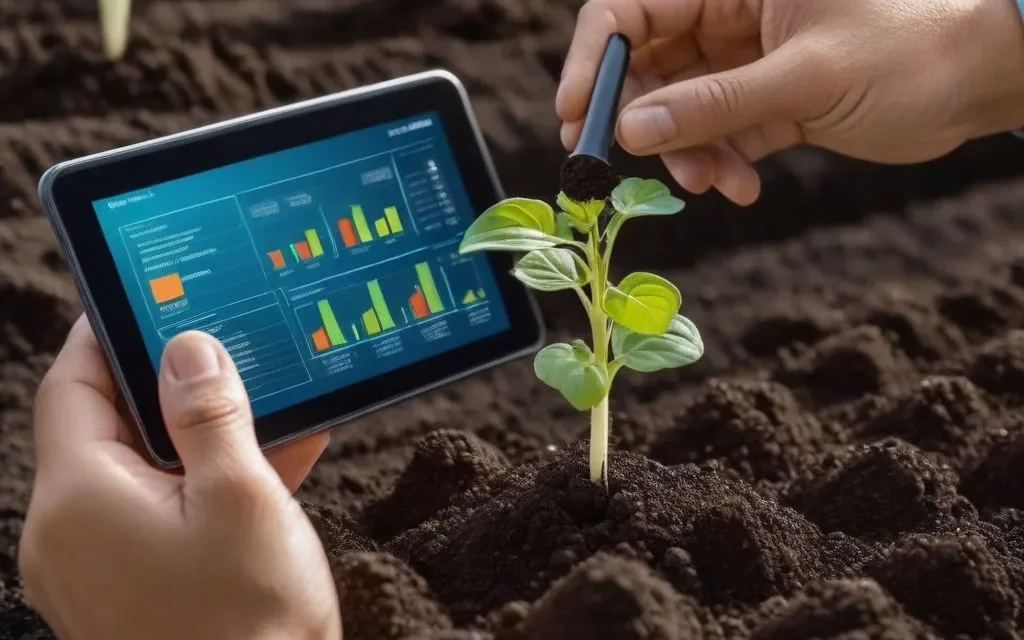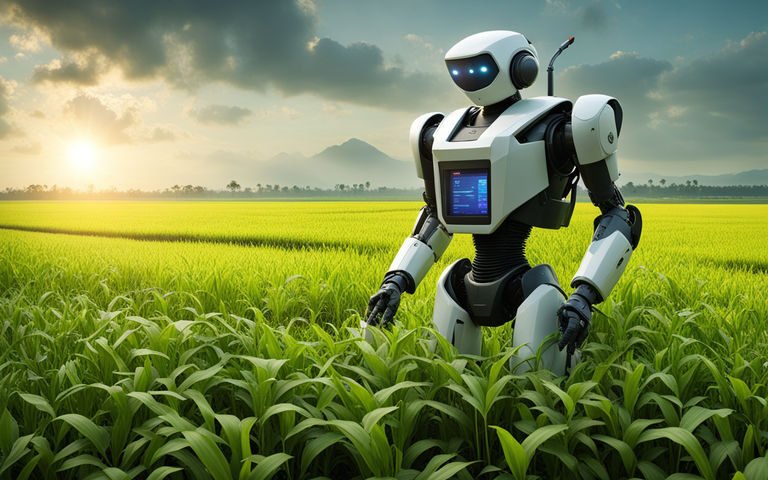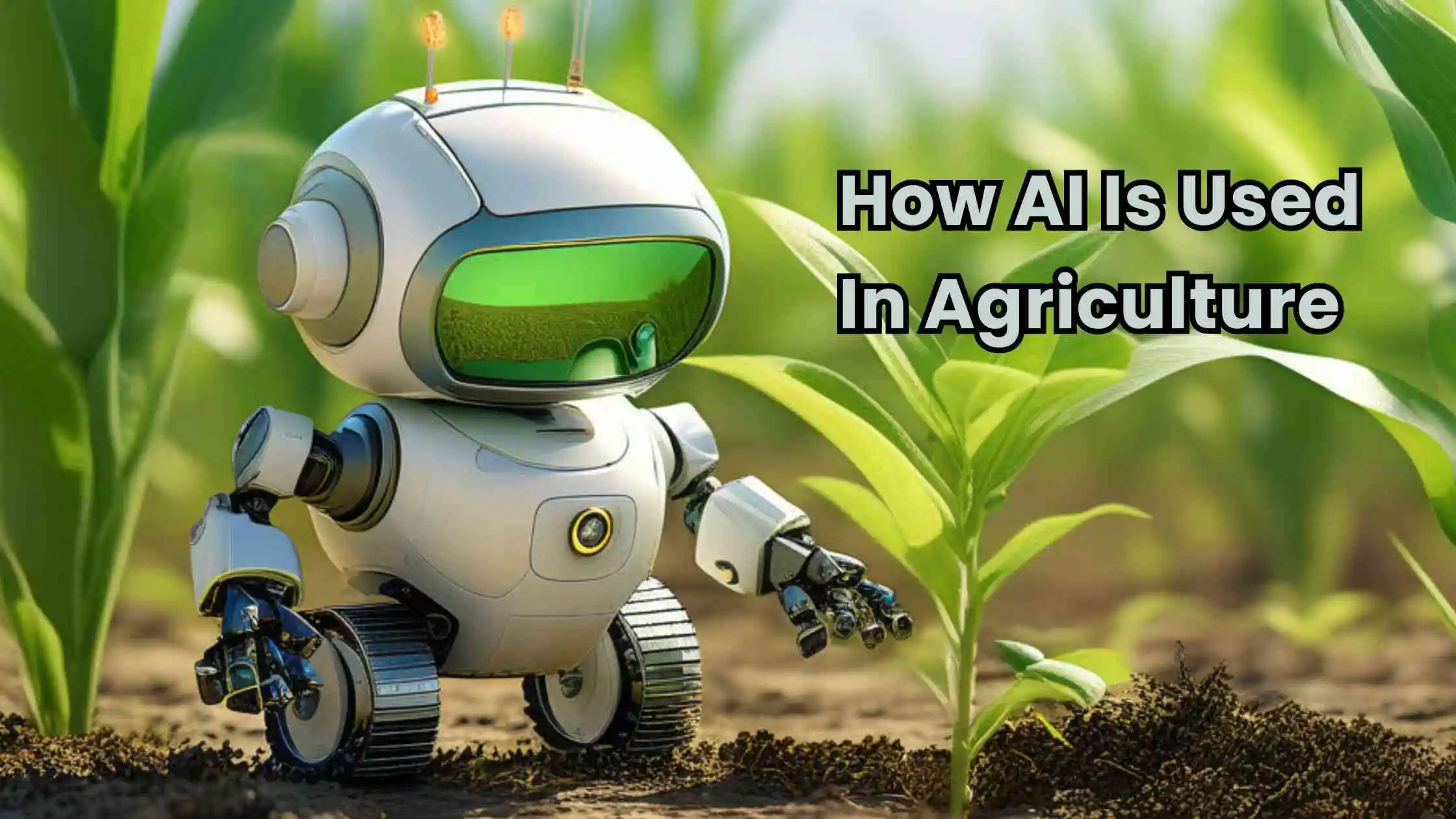Have you ever wondered how AI is used in agriculture these days? AI is quickly changing the way farmers grow crops and increase livestock.
AI is used in agriculture to optimize crop yields, predict weather patterns to monitor crop health and enable smarter resource management.
In this blog post, we’ll explore how AI is used in agriculture and how it brings benefits to farming. Get ready to discover some really cool ways that AI technology is revolutionizing agriculture!
Table of Contents
- 1. Precision Farming
- 2. Predictive Analytics
- 3. Automation and Robotics
- 4. Livestock Management
- Challenges and Future of AI in Agriculture
- FAQ’s
- Conclusion
1. Precision Farming

Precision farming is all about using technology to be incredibly precise when managing crops and soil. Instead of treating an entire field in the same way, it breaks the field down into smaller sections and optimizes for each section individually.
How Does AI Help in Precision Farming?
There are 2 ways AI can help in precision farming:
1. Data Collection
- Drones and sensors gather data about soil quality, moisture levels, and crop health for every part of the field.
- Provides huge amounts of data that would be impossible for humans alone to collect and analyze.
2. Analyzation and Mapping
- AI systems study all the collected data.
- Make detailed maps and suggestions tailored to each part of the field.
Benefits of AI in Precision Farming
Here are the benefits of AI in precision farming:
1. Optimize Inputs
- Only apply fertilizers, pesticides, water, etc. where and when needed.
- Increases yields and crop quality.
- Reduces costs and impacts on the environment.
2. Sustainable Practices
- Avoid using too much of resources.
- Target treatments to problem areas.
- Ex: See & Spray identifies and sprays individual weeds.
In summary, precision farming with AI lets farmers take care of their fields very precisely for the best results. It’s an exciting innovation in agriculture!
2. Predictive Analytics

Predictive analytics uses technology to guess what might happen in the future based on what happened in the past or recent data. In farming, it helps predict things like:
How Does AI Help Predictions?
- AI can handle a lot more data than humans.
- Historical climate data, satellite imagery, soil samples, etc.
- AI can find tricky patterns that people might miss.
- Recognizing conditions that led to past outbreaks/high yields.
- AI prediction models are extremely accurate
- They keep learning and getting better over time.
What Can Be Predict?
1. Weather Forecasts
- When rain, heat waves, frosts, etc. are likely.
- Helps plan planting, irrigation, and harvests accordingly.
2. Crop Yields
- Estimate production levels based on weather, soil, seed type
- Decide if extra inputs are needed to increase yields
3. Pest & Disease Outbreaks
- Conditions that raise the likelihood of infestations
- Take preventive steps before a major outbreak
Benefits to Farmers by Predictive Analytics
- Prepare for weather events.
- Optimize the use of water, fertilizers, and pesticides.
- Avoid costly crop losses and failures.
- Overall, increases productivity and profitability!
By using AI predictions, farmers can plan ahead instead of reacting to problems later. It’s a great tool!
3. Automation and Robotics

Farming is hard work and needs manpower, but what if robots could help out? Automation and robotics are revolutionizing agriculture by taking over many tough manual tasks.
Autonomous Robots on the Farm
- Planting – Seed planting robots can precisely plant crops at optimal spacing and depth.
- Monitoring – Robots with cameras/sensors continuously monitor crop/soil conditions.
- Weed Control – Robot weeders can detect and eliminate weeds without herbicides.
- Harvesting – Robotic arms can automatically pick fruits/vegetables.
- Herding Livestock – Robots use sensors and AI to monitor and help manage herds.
Benefits of Robotic Automation in Agriculture
Here are the benefits of robotic automation in agriculture:
1. Increases Efficiency
- Robots work 24/7 without breaks.
- Improve productivity and output.
2. Labor Savings
- Robots can fill workforce gaps.
- Handle tough, repetitive jobs.
3. Precision
- Robotic tasks are extremely accurate and consistent.
4. Real-Time Monitoring
- Constantly collect data on crops, soil, and environment.
By handling tough tasks, agricultural robots, and automation let human workers focus on other jobs. When robotics and AI work together, it’s a big deal!
4. Livestock Management

In livestock farming, including cows, pigs, chickens, and other animals, artificial intelligence (AI) is playing a big role in improving animal health monitoring and automating key management tasks.
AI for Livestock Health Monitoring
AI plays a key role in continuously monitoring animal health by employing smart sensors and computer vision technology. Here’s how it works:
1. Sensor Tracking of Vital Signs
Wearable sensors or cameras track metrics like body temperature, movement, eating behaviors, and more to detect anomalies that could indicate illness or distress.
2. Audio Technology
AI-driven audio analysis can pinpoint specific sounds like coughs or signs of distress that humans might overlook, alerting farmers to potential health issues.
3. AI Disease Detection
Sophisticated AI algorithms analyze all the sensor data to spot early signs and patterns of common livestock diseases or other health concerns.
Benefits for Farmers and Livestock
Implementing AI for livestock management provides numerous benefits:
- Improved overall animal health and welfare.
- Early detection of diseases prevents widespread outbreaks.
- Optimized environmental conditions for productivity.
- Automated operations increase efficiency and reduce labor costs.
- More sustainable, data-driven livestock management.
As this smart technology continues advancing, AI will become increasingly important for raising healthy livestock while maximizing operational profitability.
Challenges and Future of AI in Agriculture
There are so many challenges would be there in agriculture while using AI. Also, the future is also changing in Agriculture industry because of AI.
Challenges of AI in Agriculture
Even though AI is changing farming for the better, there are still some challenges to clear. But looking ahead, the future of AI in agriculture is full of exciting possibilities.
1. Data Quality
- AI systems need huge amounts of high-quality data to be accurate.
- Collecting clean, comprehensive farm data can be difficult.
2. Costs and Access
- Implementing AI technologies requires significant investment.
- This may put it out of reach for smaller farming operations.
3. Ethical Concerns
- Debates around using AI for food production.
- Issues like data privacy, accountability, and regulations.
4. Adoption Rates
- Some farmers are hesitant to embrace newer AI technologies.
- May be reluctant to let AI make critical farm decisions.
The Future of AI in Agriculture
Even with challenges, AI is getting smarter and more creative, leading to exciting future prospects:
1. Hyper-Customized Farming
- AI to micromanage plant/animal needs at an individual level.
- Enabling ultra-precise customized farming.
2. Automated Everything
- AI might do everything on the farm from planting to harvesting by itself.
- People might switch to supervising instead of doing all the work.
3. Genetic Improvements
- Applying AI to gene editing of crops and livestock.
- Creating more resilient, high-yield, nutritionally-optimized varieties.
As AI gets better at things like seeing, understanding space, and making choices, it could transform farming into a super-efficient and sustainable system for feeding everyone.
But there are challenges to tackle, like getting good data, dealing with costs, and figuring out ethics. With smart thinking and AI, farming’s future looks bright.
FAQ’s
Milking robots, harvesting robots, welding robots, and drone robots are the 4 robots used in agriculture.
Around $2.1 billion USD (2024), with significant growth expected.
Smart farming uses AI to analyze data, optimize resource use, and make data-driven decisions for higher yields and sustainability.
Conclusion
In conclusion, we explored how AI is used in agriculture in some really innovative ways. From precision farming using drones and sensors to predictive analytics that can forecast weather and crop yields, to autonomous robots that help with tasks like weeding and harvesting – AI is revolutionizing agriculture. We also looked at how AI monitors livestock health and automates operations on farms. Though there are challenges around data, costs, and adoption, the future of how AI is used in agriculture is incredibly promising


1 thought on “4 Ways AI is Used in Agriculture Industry”